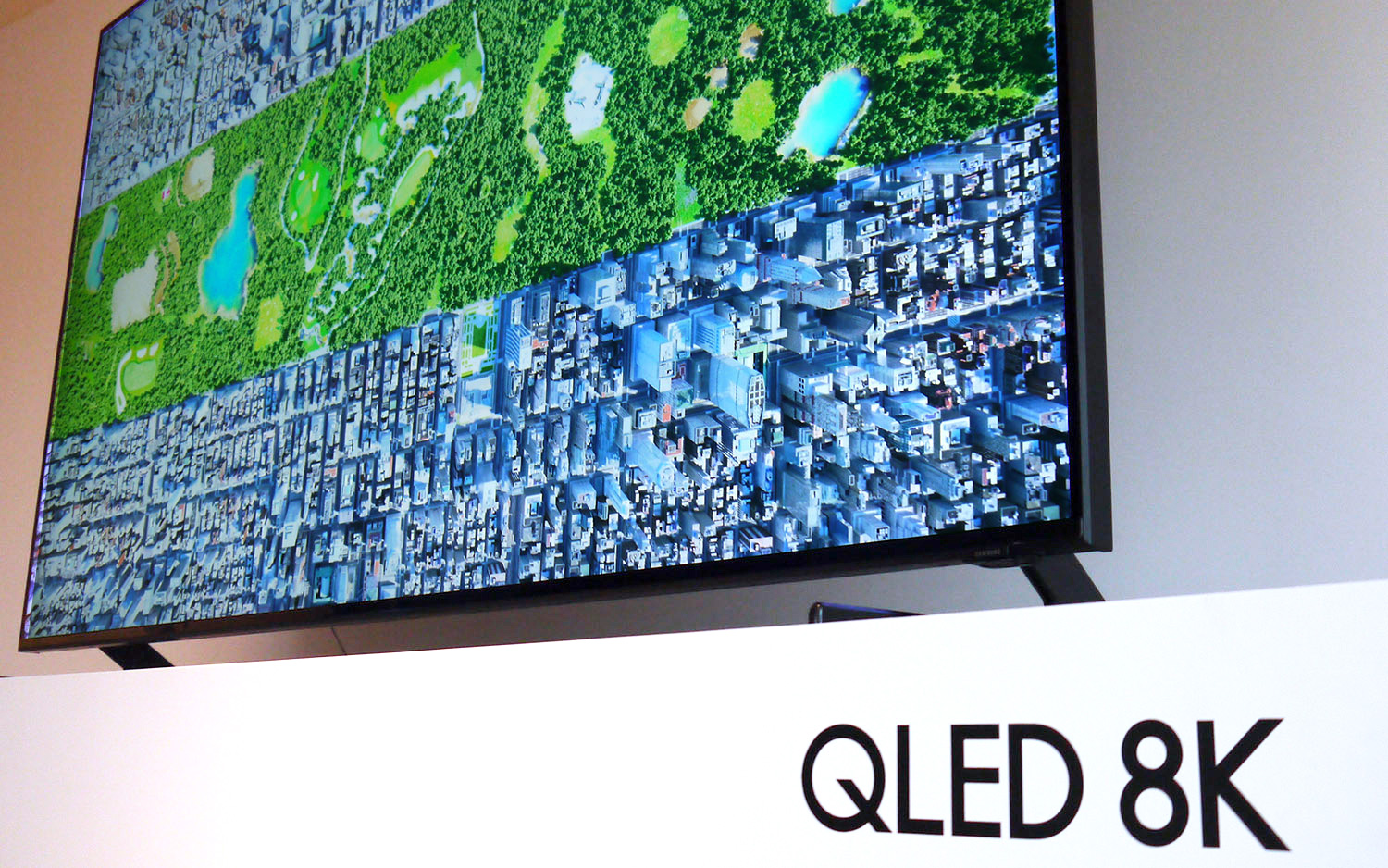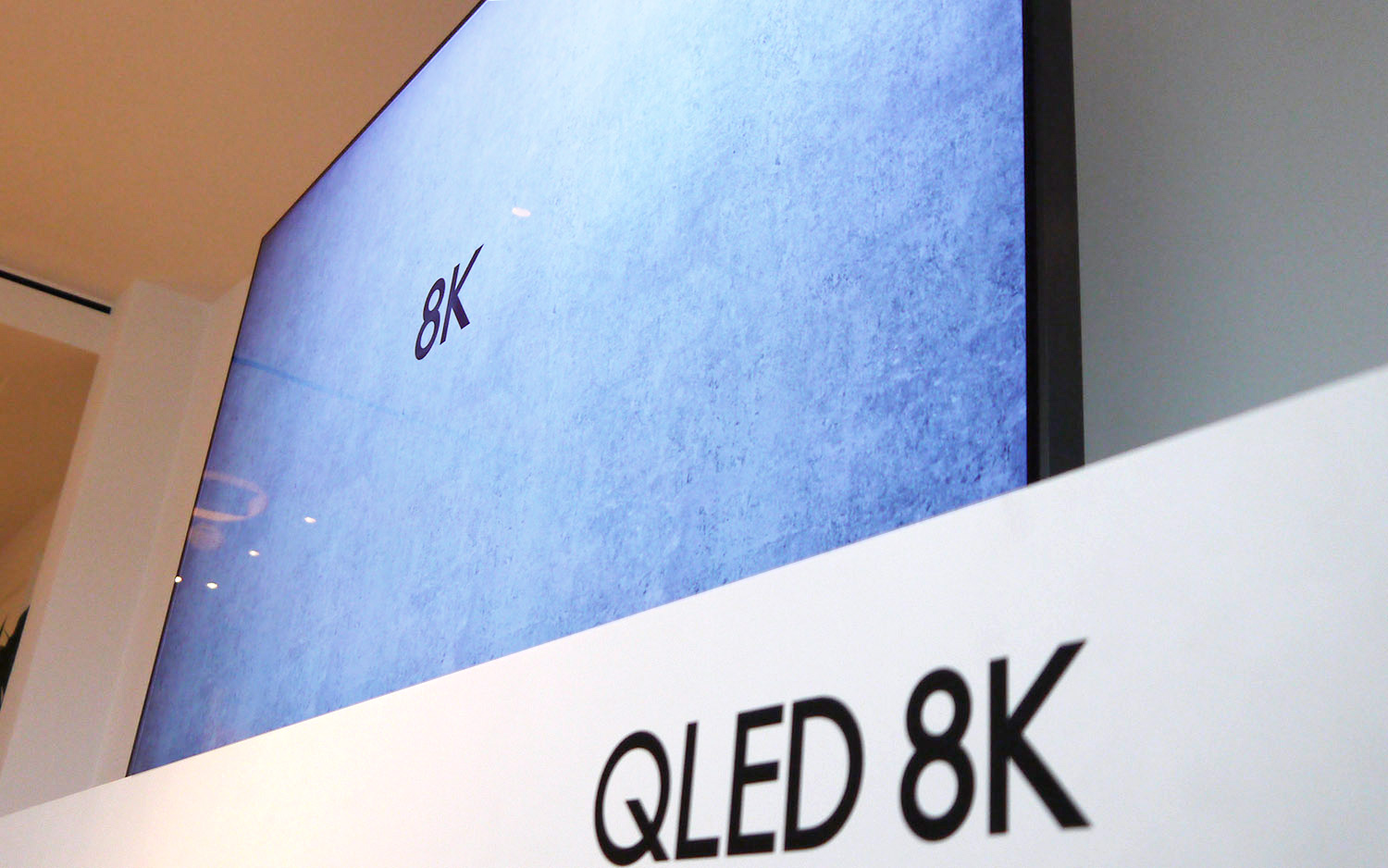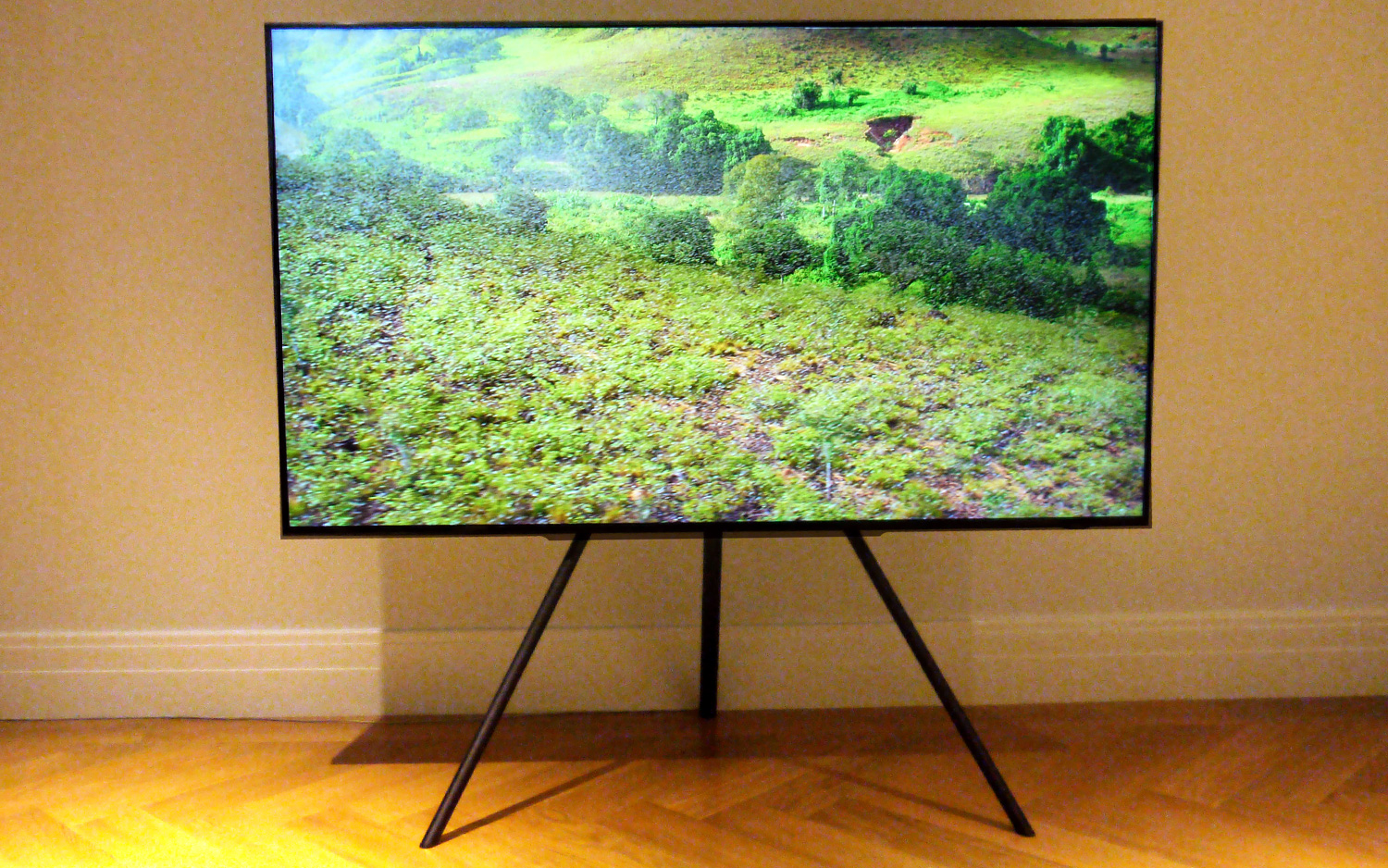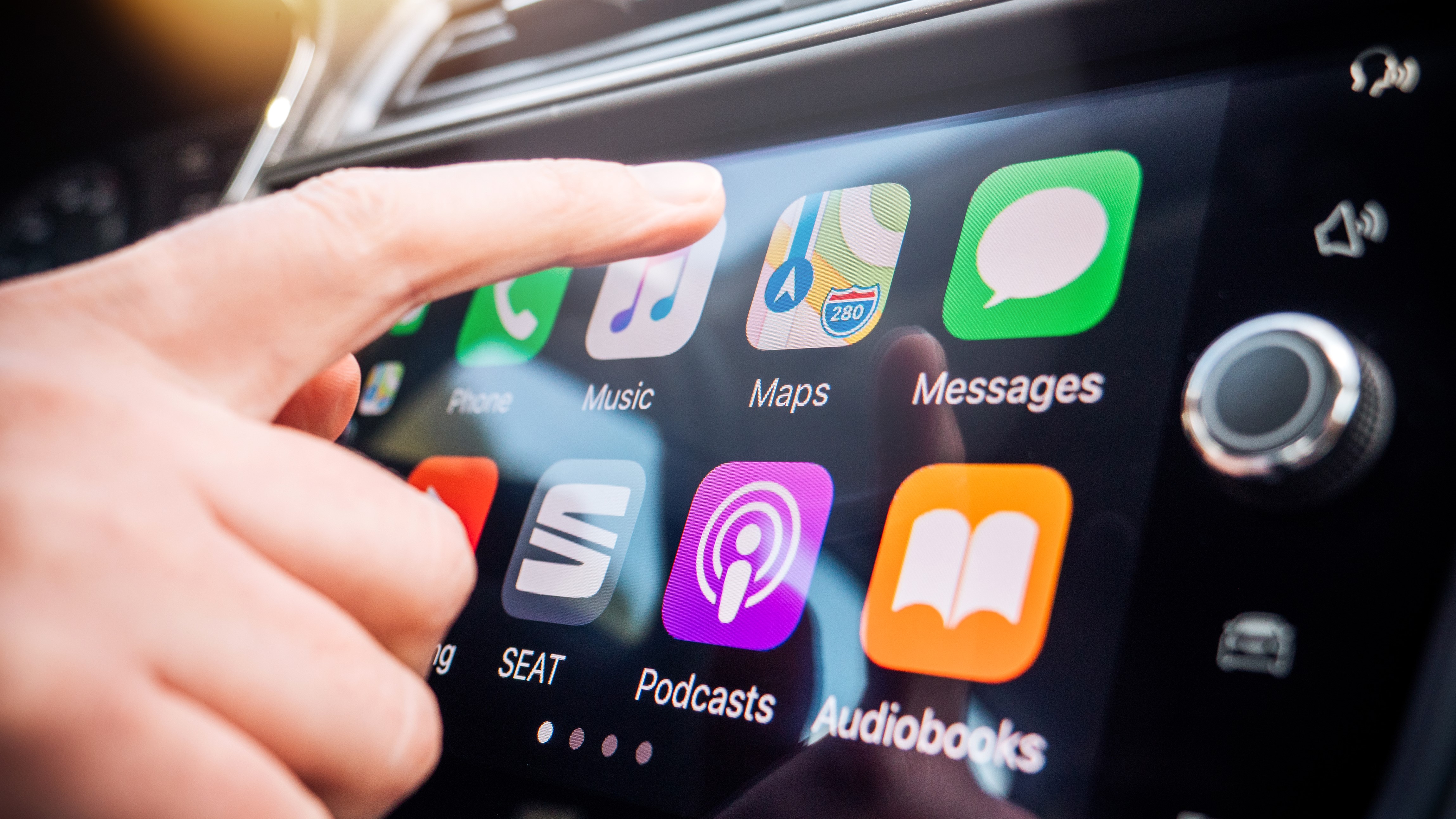Hands-on with Samsung's 8K TV: This Is Sheer Madness
If you buy the Samsung Q900 you will be the earliest of early adopters, but is the sticker shock worth it?
How early is too early? That’s the question I have been asking myself ever since getting an in-depth look at Samsung’s 8K TV range. Buying an 8K TV isn’t something I thought we would have to talk about for a few years yet, but here we are with the first line of 8K TVs shipping to the UK first and then to the rest of the world.

If you want an 8K TV, then you will have to pay big for the privilege, as the lowest-priced model in the UK - the 65-inch QLED 8K (Q900R) - is an eye-watering £4,999.99. Currently the US is set to only get the 85-inch model and that costs, deep breath, $14,999.99. Granted, for that price you get TV technology that’s on the top of its game.
True 8K resolution clocks in a 33 million pixels, four times that of 4K. It’s the brightest TV ever released, using direct LED lighting (offering 4800 nits in Dynamic mode) which means HDR content pings when shown on it.
MORE: Streaming Netflix? Here's the Best Stuff to Watch
All of this is lovely but what will you actually watch on it, given 8K content is extremely rare? Samsung believes it has the answer: upscaling.
Upscaling to the max
That’s right, for the majority of your viewing on the Samsung 8K TVs you will be watching content that’s upscaled from the source, which makes this TV the most expensive upscaler around.

At least the technology inside doing this processing is first rate. Samsung’s Quantum Processor 8K (which is powered by AI, apparently) upscales anything from SD upwards to ‘8K’ levels of quality. The exact science on how this is done boils down to Samsung’s image processing creating new detail to add into a picture, reducing the noise and restoring the edge of pixels.
“I had to stop myself from reaching out to pick the insects up - it truly was like staring through a window into a world beautifully enhanced by HDR.”
I was dubious that the upscaling could be that good but it was impressive. SD footage wasn’t the pock-marked noise-fest I thought it would be (although it certainly was nowhere near 8K quality), while HD footage upscaled to something that looked on a par with 4K. The content we were shown, though, was built specifically for the demo. I think if you had a grainy piece of SD footage to start with the effect would be dulled.
MORE: Our Favorite Soundbars for Small and Big TVs
The TV came to life when some true 8K content was shown. It was the same demo that was on display at IFA - a close-up look of some ants and its was utterly life-like. I had to stop myself from reaching out to pick the insects up - it truly was like staring through a window into a world beautifully enhanced by HDR.
Not content with the content
But yet I am still not convinced. Perhaps there’s a tinge of jealousy of not being able to afford these TVs, but even to my richest friends I wouldn’t be able to recommend Samsung’s 8K TV range… yet.

Yes, the QLED 8K (Q900R) is the best TV you can buy right now, by some margin. But take something like LG OLED65C8 - an OLED TV you can get for half the price. Or, if you want to stay brand loyal, the superb Samsung Q8F9 QLED. Yes it’s only ‘4K’ but the technology built into these TVs is stunning and will stay stunning for years to come.
he big issue: the world doesn’t feel ready for 8K TVs yet. Consumers are still figuring out where and how to get 4K content to watch on their shiny new 4K TVs but when they do watch something they are utterly impressed by the picture quality. So the idea of shifting so soon to an 8K panel will be hard to stomach for many.
Those who wait to upgrade to 8K, even for just a year or two, will be rewarded with cheaper prices, a refinement in design (the Q900R’s picture maybe stunning but it’s a little industrial in its overall look) and an actual reason to purchase - and that is more 8K content.
MORE: Best Devices to Sling Your Phone or Tablet to a TV Screen
One of the things I watched upscaled on the 65-inch version of the Q900 was Guardians of the Galaxy 2. It was one of the first Hollywood films shot in 8K on the RED camera and scaled down for release. Filmmakers are beginning to shoot in 8K to future proof but the general public just hasn’t been given access to the format. That, with time, will come.
Future proofing on board
Samsung has thought of future proofing as well, which is important considering the price paid for these panels.
The company has been very clever in its thinking about upgrades. The upcoming HDMI 2.1 standard is 8K-ready, but the changes may not stop there. Given 8K is a format where the official spec is in flux, it is highly likely that we will see a new type of HDMI come into existence when the format hits the mainstream. If this does happen, Samsung has parked all the connections in the One Connect Box. This means that if specs change, its existing panel will not need upgrading, only this box will.
This type of future proofing is a smart move by Samsung, and may tempt some with deep pockets to consider buying a TV.
The best type of future proofing you can do for the moment, though, is ride the 4K wave a little longer and see what happens to pricing when Samsung’s rivals eventually show their 8K wares.
Credit: Tom's Guide
Sign up to get the BEST of Tom's Guide direct to your inbox.
Get instant access to breaking news, the hottest reviews, great deals and helpful tips.
Marc Chacksfield is Director of Shortlist Media and Editor-In-Chief of Shortlist. He's been a technology and entertainment journalist for 15 years and was previously UK Editor In Chief at Tom's Guide, TechRadar and Digital Camera World. He's also written for the likes of T3 and Tom's Hardware. In his spare time he tries to play guitar, PlayStation and supports Chelsea.
